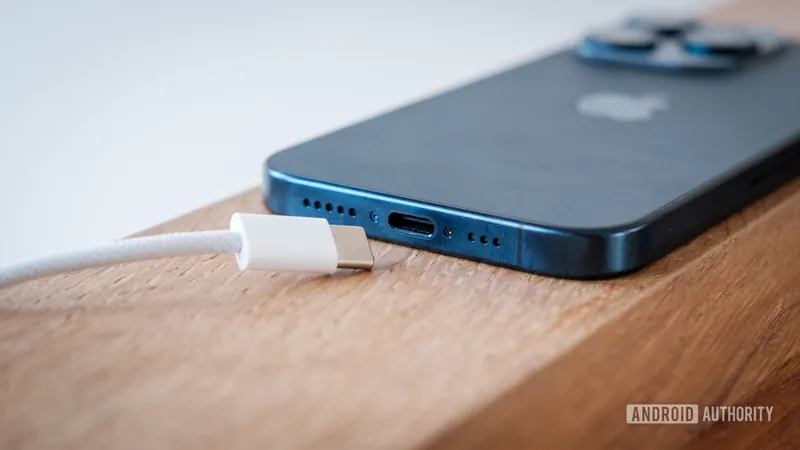
A Year Later: Is Apple Failing with USB-C Just Like Everyone Else?
2024-10-06
What Apple Got Right About USB-C
One area where Apple has succeeded is in simplifying the charging experience. Gone are the days of juggling multiple cables, even for those deeply embedded in Apple's ecosystem. As the Lightning connector fades into obsolescence, devices like the iPhone, iPad, and MacBook now benefit from the same type of USB-C accessories that work with a wide array of gadgets, including Android phones and PCs. This transition marks a significant win in terms of convenience.
Additionally, the iPhone 15 series brought DisplayPort support to the table, allowing users to mirror their displays on external monitors at 4K resolution. While this feature isn't groundbreaking, it does enhance video playback and presentations on bigger screens, and it taps into the gaming capabilities of some those devices. Yet, these advantages aren't central selling points for consumers.
Pro users have an even brighter spotlight on improvements, as they can now enjoy staggering 10Gbps data transfer speeds, which is a massive leap over the older Lightning standard. This speed is especially beneficial for those working with high-resolution RAW photos or videos via Apple's ProRes and Cinematic Video modes.
Where Apple Falls Short
However, this newfound speed and capability are reserved for the higher-end iPhone 15 Pro and Pro Max models, leaving standard iPhone 15 and 16 users with the same sluggish USB 2.0 speeds that were characteristic of the Lightning cable—only 480 Mbps. This puzzling choice indicates that Apple may have opted for a cheaper USB controller in its more budget-friendly models, leaving consumers puzzled and frustrated. It's worth noting that the iPad Pro, in contrast, can handle data speeds up to 40Gbps with Thunderbolt support, further illustrating the disparity within Apple's own product line.
As for charging capabilities, even the Pro models are somewhat underwhelming. Although they boast a slight uptick in charging speeds (around 25W instead of the standard 20W), they still lag behind what's available in the fast-charging domain offered by competitors. The iPhone 16 series continues to prioritize wireless MagSafe charging, which caps at 25W, over the more efficient USB Power Delivery specifications, warranting some serious scrutiny concerning consumer convenience.
Missed Opportunities Abound
While Apple’s transition to USB-C wasn’t a total flop—devices function as intended, and many features exist—it's evident that the company hasn’t fully seized the potential of this connector. The muddy waters surrounding differing data speeds and charging capabilities leave many iPhone users in the dark, often unaware of what their device is truly capable of without extensive research.
Expectations were high that Apple would set a standard for USB-C implementation similar to what it did with Lightning, delivering a user-friendly ecosystem. Instead, consumers are left confronting yet another quagmire reminiscent of previous Android implementations. And in a twist of irony, even Google seems to be grappling with ensuring its devices offer coherent charging options.
Overall, while Apple may have turned a corner by mainstreaming USB-C for its devices, it hasn't fully embraced the benefits that the standard offers, which has ultimately resulted in a confusing and spotty user experience. One can only hope for clarity and improvement as we await future iterations of Apple’s devices.









 Brasil (PT)
Brasil (PT)
 Canada (EN)
Canada (EN)
 Chile (ES)
Chile (ES)
 España (ES)
España (ES)
 France (FR)
France (FR)
 Hong Kong (EN)
Hong Kong (EN)
 Italia (IT)
Italia (IT)
 日本 (JA)
日本 (JA)
 Magyarország (HU)
Magyarország (HU)
 Norge (NO)
Norge (NO)
 Polska (PL)
Polska (PL)
 Schweiz (DE)
Schweiz (DE)
 Singapore (EN)
Singapore (EN)
 Sverige (SV)
Sverige (SV)
 Suomi (FI)
Suomi (FI)
 Türkiye (TR)
Türkiye (TR)